
The OEM & Industrial Fan Specialists
Customer Driven, Market Proven
The Cincinnati Fan Difference
Customers are the Cincinnati Fan Difference. Since our founding in 1956, we have always insisted on providing our customers with the best possible value.
- Product Specialization
We do not try to be everything to everyone. By concentrating on what we do best, we manufacture products that last longer and cost less to start up and maintain. - Prompt Deliveries
All standard fans and blowers are shipped in 10-15 working days, with most accessories. - Strict Quality Assurance
State-of-the-art laser cutting machines and robotic welding along with our highly skilled workforce allow us to consistently manufacture high quality fan and blower components. - Experienced Local Support
Over 170 qualified sales engineers in 56 offices across the U.S.A. and Canada to assist you with your specific air handling requirements. - Quick Ship Program
5 working day RUSH program available on most fans, with most accessories. - Live telephone support
Receive live personable service when you call our corporate office during business hours. - Ongoing Service
Supplying high quality fans and blowers with prompt delivery is only half the job. Providing service after-the-sale is the key to truly meeting customer needs. Give us a try. - Unequaled Reputation
While we pride ourselves on our reputation within the industry, we know that providing truly good service is an ongoing endeavor. We encourage you to contact our local, independent sales office in your area for their opinion of Cincinnati Fan’s commitment to customer service.
Products- Centrifugal Blowers & Fans
- Axial Fans
- Custom Fans & Blowers
- Dust Collectors
- Portable Fume Exhausters
- Replacement Parts
- Performance Ranges
- Product Catalogs
- Maintenance Manuals
- Fan Selection
- Quick Fan Selector
- Industrial Fans Overview
- How To Select A Fan
- Lookup by Model
Industrial Fans vs. General Purpose Fans
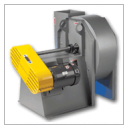
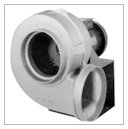
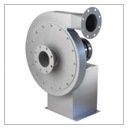
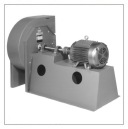
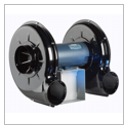
Popular Centrifugal Models
Complete Centrifugal Fan Listing
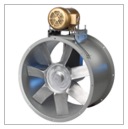
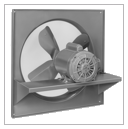
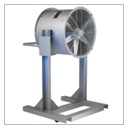
Popular Axial Models
Complete Axial Fan Listing
Industrial Fans & Blowers
OVERVIEW:
Many fans and blowers fall under the classifications of Industrial Fans, Industrial Blowers, Industrial Exhausters, Exhaust Blowers, Industrial Cooling Fans, Industrial Exhaust Fans, Industrial Ventilation Fans, Industrial Centrifugal Fans, and Impeller Fans. They are all one of two basic types of industrial fans: Centrifugal or Axial.
The term “industrial” fan does not have a clear definition, but the term is intended to mean a fan of heavier construction to meet the demands of industrial operations. This may include the use of thicker material gauges, larger shafts, bearings with increased bearing life, high temperature features, corrosion resistant materials, etc. compared to commercial or HVAC fans.

Contact your local Sales Engineer today
Centrifugal fans or blowers use one of seven types of wheels that are enclosed in a scroll shaped housing. The air enters the fan wheel through the housing inlet, turns 90 degrees and is accelerated radially and exits the fan housing.
Axial fans use a propeller, having two or more blades, to move air in an axial direction through a cylindrical housing or formed orifice panel.
The term “fan” is used to describe either a fan or blower. To make the proper fan selection, you must consider the following conditions the fan will be subjected to:
- What is the air volume that will be required? This is rated in cubic feet of air per minute (CFM) or the metric equivalent, cubic meters per hour (M³/Hr).
- What is the static pressure resistance through the complete system? This is rated in inches water gauge (in WG) or the metric equivalent, millimeters water gauge (mm WG).
Note: in WG or mm WG is the resistance to flow, or friction, caused by the air moving through a pipe or duct. Be sure to include other such as filters, dampers, heat exchangers, etc. - What is the temperature of the air going through the fan?
- What is the ambient air temperature outside the fan?
- Will the air stream be clean, dry air? Will there be any corrosive substances in the air?
- If the fan will be used to convey material, answer the following:
a. What is the material?
b. How much does the material weigh, in pounds per cubic foot?
c. How many pounds will you need to convey per minute or hour?
d. Is the material long and stringy or granular? - Will there be any moisture in the air stream?
- What is the altitude where the fan will be operating?
- Is anything going through the fan that could be explosive?
- Does the location the fan will be operating in contain any explosive material, liquid or both?
An Axial fan can be used for all the above parameters, except if you will be using the fan to convey material (#6 above). Most Centrifugal fans can be used for any of the above parameters. However, if conveying material, a fan with a forward curve (squirrel cage) wheel is not suitable. The best centrifugal wheel type for conveying material is a radial bladed wheel. If the material you will be conveying is long and stringy, like paper trim or fibers, only an open radial bladed wheel should be used.APPLICATIONS:
While a list of all the applications industrial fans and blowers are used for would be extremely long, the most common are:
Centrifugal Fans & Blowers:
- Conveying material in dust collector systems or loading to silos, trucks and railroad cars.
- Combustion air for burners and industrial water heaters.
- Cooling electrical equipment or parts from heat curing ovens and kilns.
- Pressurizing cabinets, vaults or rooms.
- Blow-off systems to remove moisture from parts prior to painting, coating or packing.
- General ventilation of rooms or factories.
- Providing suction or pressure for industrial process air flotation tables.
- Drying ink on cans and bottles, silk screen and printing processes.
- Food processing.
- Circulating air in ovens and dryers.
- Forced ventilation of AC and DC motors and traction motors.
Industrial Axial Fans:
- Paint spray booth exhaust.
- Fume hood exhaust.
- Welding fume exhaust.
- Process cooling and exhaust of machinery and/or systems.
- Personnel cooling in hot work areas.
- Forced cooling and exhausting heat in steel mills.
- Forced cooling for kilns, ovens and forges.
- Exhausting mist and vapor in paper mills or industrial parts washers prior to painting parts.
- General ventilation using supply air and make-up air in factories, foundries and warehouses.